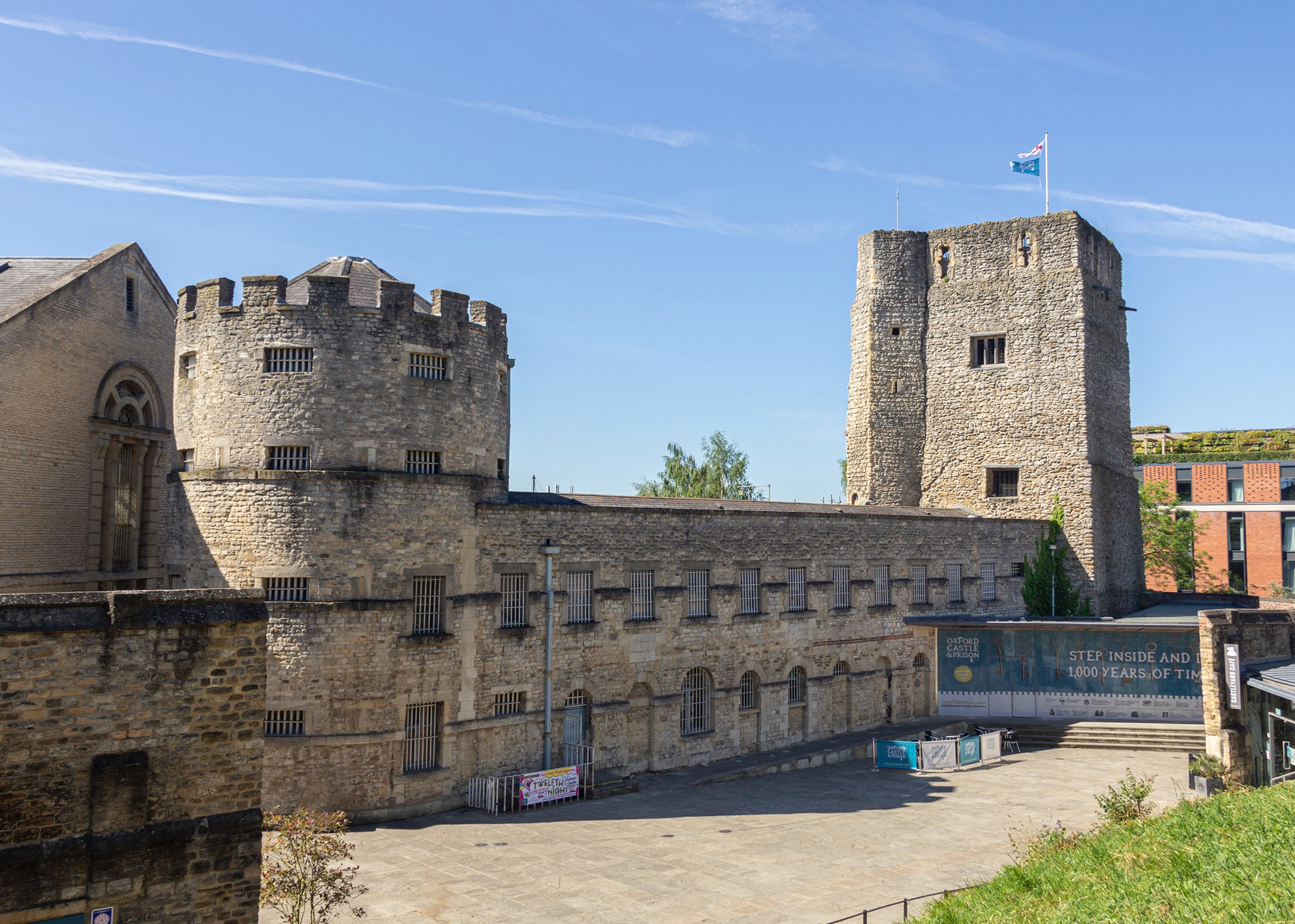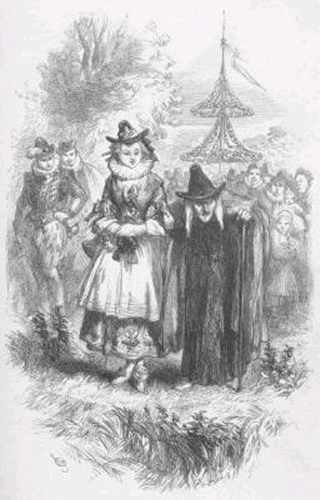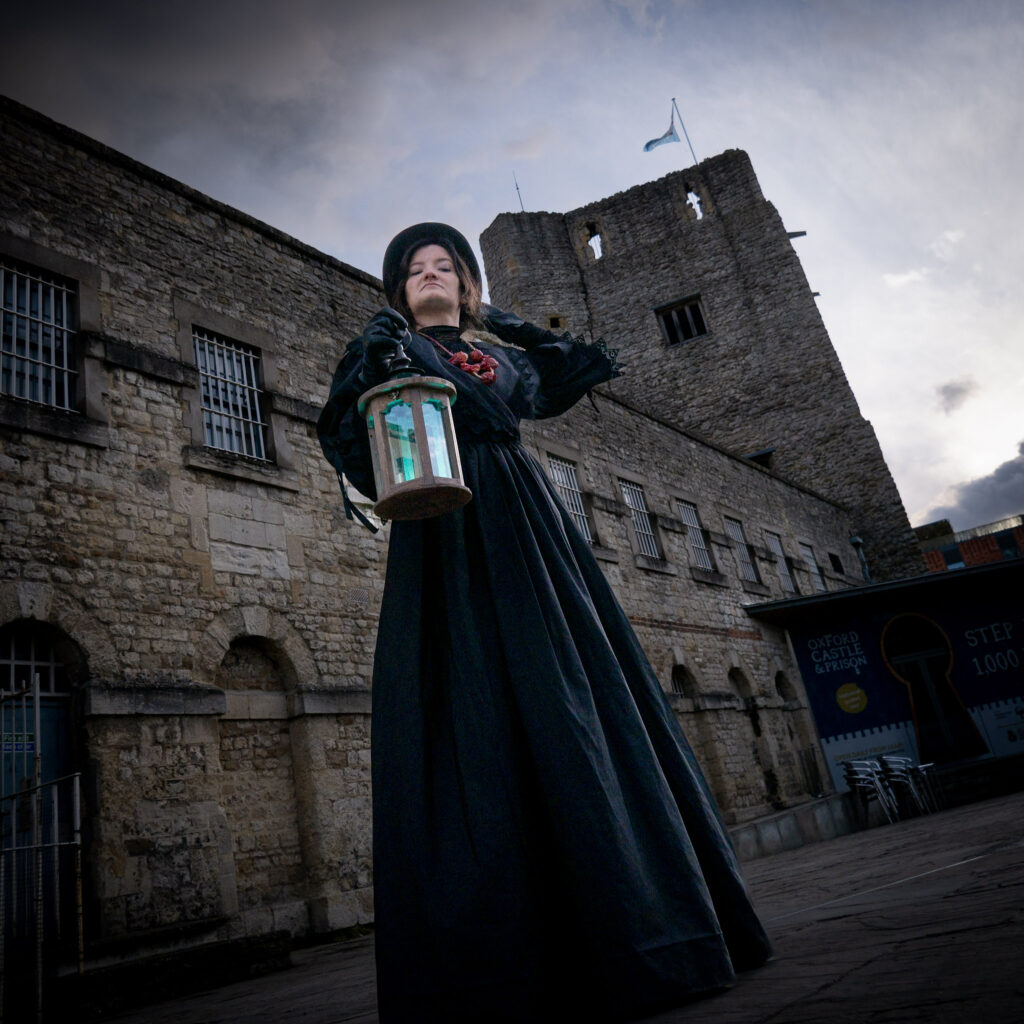 aaa
aaa
In the 16th and 17th centuries suspicion of witchcraft was at its height. In England and other nations across Europe there were trials and executions of suspected witches, including in Oxford. Hundreds died in England as a result.
The first law relating to witchcraft in England was not introduced until the reign of Henry VIII, though there had been trials of suspected witches earlier. The trial of Eleanor Cobham, Duchess of Gloucester, in 1441 is a famous example. It was under James I that trials started in large numbers.
He was also James VI of Scotland, where he encouraged witchcraft trials before succeeding to the throne of England. Inspired by the Copenhagen witch trials of 1589, the North Berwick witch trials were held in 1590. The King was convinced a witch had cursed his fleet, causing them to face a terrifying storm while returning to Scotland from Denmark.
When King James VI became King of England in 1603 he quickly made changes to the English Witchcraft Act that stirred up fear across the country.

Accusations of witchcraft increased, creating more fear amongst the public, which then meant even more accusations in a vicious cycle. It was typically poor, older women accused, particularly cat owners because the animals were considered “familiars”.
The trials were at their most intense during the 1650s during England’s Puritan era.
The fear sweeping the nation also created the demand for a new profession to bring suspected witches to justice: witch-hunters.
Matthew Hopkins was the most famous of these. He even became known as the “Witchfinder General”. He received significant payments from towns for bringing to trial all the witches in the area. Hopkins was ruthless, ordering the hanging of nineteen suspected witches in Chelmsford in one day. His theory for finding a witch focused on locating a “Devil’s Mark” on the suspects body. Anything from a mole to a flea bite he would claim was the sign that they were a witch. To prove it, he would prick the area with a “needle” and if the woman felt no pain it was proof they were guilty. The device he used included a fake needle that would retract into the handle upon pressure, so painless. They would appear guilty.
Women accused of witchcraft suffered horrific torture. James I was reported to have supervised the torture of some suspected witches himself.

One method to tell if somebody was guilty of witchcraft was to tie their left thumb to their right toe and then toss them into a body of water, such as the moat of Oxford Castle & Prison. If they floated, they were guilty. If they didn’t, they were innocent. However, it also meant they had not survived.
The image of witches burned at the stake is a popular one. However, it was not the most common execution method. Hanging was more common.
Imperialism meant that English witchcraft laws applied in other countries around the world. A famous example from the North American colonies is the Salem Witch Trials.
Hundreds of people were executed for witchcraft in England. The last documented execution for witchcraft in England was in 1682. While Jane Wenhamw was sentenced to hang in 1712, she was pardoned by Queen Anne. Fear of witchcraft still lingered throughout the country. There were even instances of mobs attacking suspected witches. However, reverse witch trials emerged as those abused for suspected witchcraft reported those who attacked them to face legal proceedings.

If you’re hungry for more spine-chilling stories of Oxford’s connections with the occult, then join us on Friday evenings throughout the year for a tour through the spookiest parts of Oxford!


| Cookie | Duration | Description |
|---|---|---|
| cookielawinfo-checkbox-advertisement | 1 year | Set by the GDPR Cookie Consent plugin, this cookie is used to record the user consent for the cookies in the "Advertisement" category . |
| cookielawinfo-checkbox-analytics | 11 months | This cookie is set by GDPR Cookie Consent plugin. The cookie is used to store the user consent for the cookies in the category "Analytics". |
| cookielawinfo-checkbox-functional | 11 months | The cookie is set by GDPR cookie consent to record the user consent for the cookies in the category "Functional". |
| cookielawinfo-checkbox-necessary | 11 months | This cookie is set by GDPR Cookie Consent plugin. The cookies is used to store the user consent for the cookies in the category "Necessary". |
| cookielawinfo-checkbox-others | 11 months | This cookie is set by GDPR Cookie Consent plugin. The cookie is used to store the user consent for the cookies in the category "Other. |
| cookielawinfo-checkbox-performance | 11 months | This cookie is set by GDPR Cookie Consent plugin. The cookie is used to store the user consent for the cookies in the category "Performance". |
| PHPSESSID | session | This cookie is native to PHP applications. The cookie is used to store and identify a users' unique session ID for the purpose of managing user session on the website. The cookie is a session cookies and is deleted when all the browser windows are closed. |
| viewed_cookie_policy | 11 months | The cookie is set by the GDPR Cookie Consent plugin and is used to store whether or not user has consented to the use of cookies. It does not store any personal data. |
| Cookie | Duration | Description |
|---|---|---|
| _ga | 2 years | The _ga cookie, installed by Google Analytics, calculates visitor, session and campaign data and also keeps track of site usage for the site's analytics report. The cookie stores information anonymously and assigns a randomly generated number to recognize unique visitors. |
| _gat_UA-9822230-4 | 1 minute | A variation of the _gat cookie set by Google Analytics and Google Tag Manager to allow website owners to track visitor behaviour and measure site performance. The pattern element in the name contains the unique identity number of the account or website it relates to. |
| _gcl_au | 3 months | Provided by Google Tag Manager to experiment advertisement efficiency of websites using their services. |
| _gid | 1 day | Installed by Google Analytics, _gid cookie stores information on how visitors use a website, while also creating an analytics report of the website's performance. Some of the data that are collected include the number of visitors, their source, and the pages they visit anonymously. |
| CONSENT | 2 years | YouTube sets this cookie via embedded youtube-videos and registers anonymous statistical data. |
| Cookie | Duration | Description |
|---|---|---|
| _fbp | 3 months | This cookie is set by Facebook to display advertisements when either on Facebook or on a digital platform powered by Facebook advertising, after visiting the website. |
| fr | 3 months | Facebook sets this cookie to show relevant advertisements to users by tracking user behaviour across the web, on sites that have Facebook pixel or Facebook social plugin. |
| test_cookie | 15 minutes | The test_cookie is set by doubleclick.net and is used to determine if the user's browser supports cookies. |
| VISITOR_INFO1_LIVE | 5 months 27 days | A cookie set by YouTube to measure bandwidth that determines whether the user gets the new or old player interface. |
| YSC | session | YSC cookie is set by Youtube and is used to track the views of embedded videos on Youtube pages. |
| yt-remote-connected-devices | never | YouTube sets this cookie to store the video preferences of the user using embedded YouTube video. |
| yt-remote-device-id | never | YouTube sets this cookie to store the video preferences of the user using embedded YouTube video. |